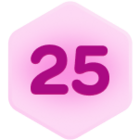The Custom Blocks contest deadline is approaching! Do you have questions about releasing or debugging your block? We’re hosting our third live Ask Me Anything (AMA) session in this thread on Wednesday (6/24) at 11am PT.
Billy Littlefield and Tim Deng from our platform engineering team will be ready to answer any development questions you have.
We’ll be picking 3 questions at random to win a $40 Amazon gift card. Any solutions offered by the community will be included in the draw as well. You can even start posting your questions now, and we’ll be answering questions live from 11am - 11:30am PT on Wednesday. See you there!


